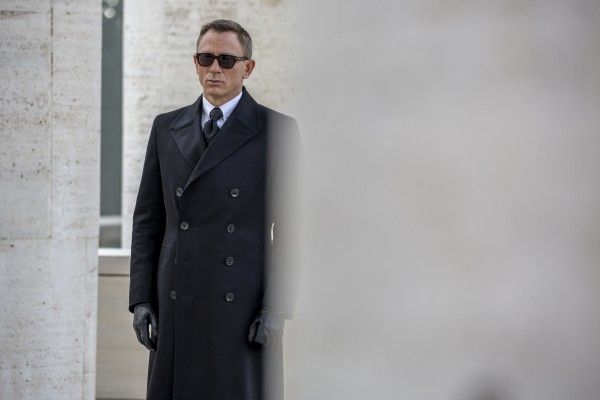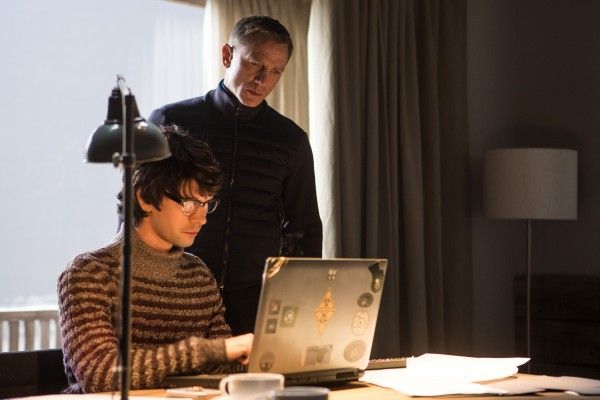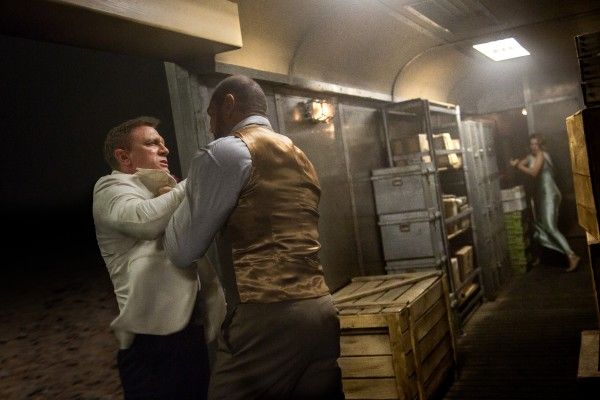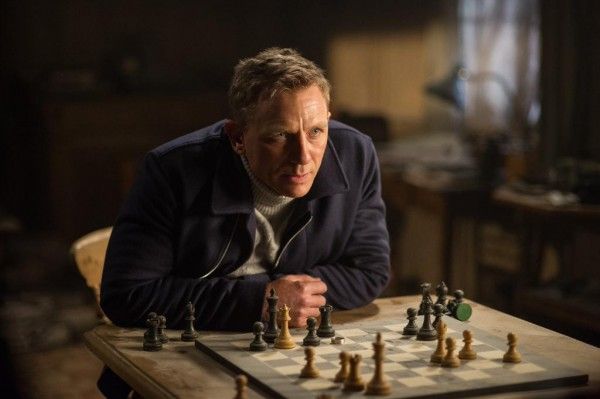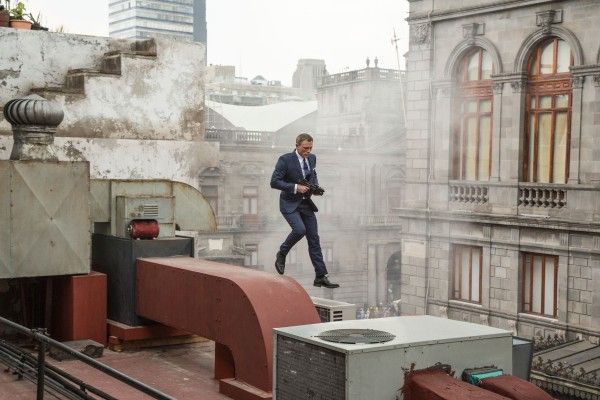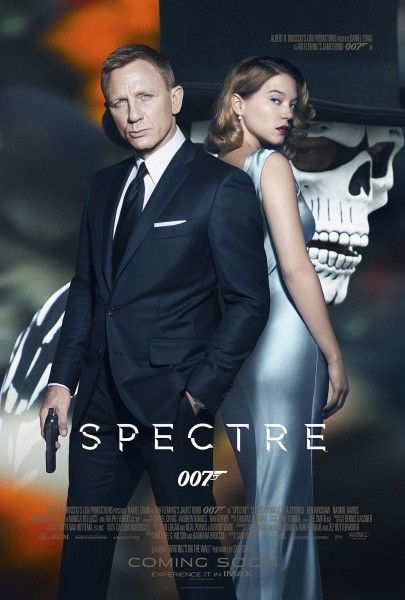There are two James Bonds. There’s James Bond, The Character: The one who appears in Ian Fleming’s novels and in the movies. Different actors play him, he has different tones, and he possesses a certain attitude that ranges from dour to suave to outright cocky. He’s kept in check by James Bond, The Franchise, which requires that The Character behave within certain confines, have various signposts (e.g. gadgets, girls, cars), and contain a requisite amount of action to satisfy the audience. James Bond, The Character can travel the world, but he’ll never truly be free from James Bond, The Franchise.
The previous James Bond film, Skyfall, tried to reassert and reevaluate the character. Part of that film’s success is that it’s a hard look at what it means for Bond, The Character to live inside the Bond franchise, and if the latter has come to shackle the former, or if there can be harmony between the two. Skyfall proudly declares at the end that the Bond elements Casino Royale stripped away—Q, drink preference, etc.—are back and Bond is ready to return to duty “with pleasure.” The movie acknowledges that the world has changed, but that Bond, both as a character and an icon, is still equipped to protect Queen, Country, and the rest of us, and look good while doing it.
But whereas Skyfall breathes Bond and understands both the character and the franchise backwards and forwards, Sam Mendes’ follow-up Spectre, prefers imitation. It doesn’t understand why Skyfall worked so well, so it retreads the wrong beats, regurgitates points the superior movie already made, and then hopes to cash in on nostalgia, but in such a clumsy way that it borders on comical. Skyfall was concerned with what it means to be Bond, but Spectre, sadly, is more about keeping up appearances.
The story begins with Bond (Daniel Craig) in Mexico City on the Day of the Dead working an unsanctioned operation. However, the op goes awry, and half of a city block ends up getting leveled. Bond gets put on the hot-seat along with the 00 program, which is on the verge of being canceled by the smarmy Max Denbeigh (Andrew Scott), who is launching a new intelligence-gathering organization, “Nine Eyes”. Bond enlists Q (Ben Whishaw) and Moneypenny (Naomie Harris) to keep a frustrated M (Ralph Fiennes) off his back, so he can chase down a lead he discovered in Mexico City, a lead that has surprising personal ramifications for 007.
Spectre treats the Daniel Craig Bond films as a franchise within a franchise. The things that were unimportant to begin with—gadgets, girls, cars, etc.—are now vital to the series’ identity, but it also wants to note the specific characters this Bond encountered like Vesper Lynd (Eva Green), Mr. White (Jesper Christensen), Silva (Javier Bardem), etc. It’s a Bond quadrilogy wrapped in a film series that’s existed since 1962, and a character who has been around since 1953. So how do you close off something that began long before you began and will continue long after you’re done?
Unfortunately, Spectre doesn’t have that answer, and if anything, it doesn’t use Skyfall’s success to take chances. Instead, it doubles down on trying to mythologize Bond and craft an arc without making him face the weight of past decisions. Part of what make Skyfall so wonderful is we see Bond weakened by an identity crisis. He, like his franchise, doesn’t know where he fits in any more, and he might be better off dead. The film resolves that the world needs him, but when Spectre confronts him with his personal failing—all the people, especially women, who have died because he wasn’t good enough—there’s no response. We know Vesper Lynd’s death still weighs on Bond, but this movie’s Bond girl, Madeleine Swann (Léa Seydoux) feels more like a replacement rather than Bond’s equal or someone who upends the status quo.
That status quo is ultimately what proves to be Spectre’s undoing. Rather than serve the character of Bond and what this new story means to him specifically, the new film decides to go for fan service. Skyfall played a delicate balance, but Spectre drops in the relentless henchman Hinx (Dave Bautista) not because he’s interesting, but because he’s meant to recall Oddjob and Jaws. Rather than Spectre telling a specific story, it’s trading on Bond stories that are decades old.
Although Spectre doesn’t fare much better when it tries to trade on the franchise’s recent success either. The conflict between Denbeigh and M is a retread of the past film’s question, “Is Bond outdated?” and they’ve simply reiterated it with intelligence gathering and drone warfare. Bond always reflects his time period, but while Skyfall did it organically, Spectre has to stop and have two characters talk out the purpose of a “License to Kill” in the 21st century.
Taken separately, the elements that make up Spectre could have been built into a worthy successor to Skyfall, but together they make the movie feel bloated and lethargic after the exhilarating opening scene in Mexico City. Mendes loses sight of Bond amidst where the character falls into the larger franchise, the smaller quadrilogy, and our political reality. If Spectre wanted to dive in with both feet and make an old-school Bond film that has him clashing with a moustache-twirling villain and a signature henchman, that’s fine, but Spectre doesn’t know how to make it fit with a personal story about all the people Bond has lost since Casino Royale and what the character represents in a 21st century context.
What’s most disheartening about Spectre is that there was room to finally move the character forward, and instead it retreats to what’s safe. While Mendes does an adept job behind the camera, he’s no longer pushing the boundaries of a Bond story. The movie’s villain, Oberhauser (Christoph Waltz), says he’s the “author” of Bond’s pain, but we never see him write anything. We’re told Madeleine can take care of herself, but she seems as reliant on Bond as almost every other Bond girl. Skyfall was the answer of “How do you reinvent a classic?” but Spectre doesn’t have an answer for what comes next. It simply holds up Bond the Franchise in place of Bond the Character and hopes that audiences won’t be able to tell the difference.
Bond, the Character and Bond, the Franchise will have to find a way to co-exist if producers Barbara Broccoli and Michael G. Wilson ever want to string quality Bond films together. Rather than step boldly into a new future and continue to question what it means to be James Bond—as a character in ongoing stories or in the larger franchise—Spectre turned to the past only to discover there’s not much there beyond a few set pieces, gorgeous women, and an empty martini glass.
Rating: C-


